Pamela Q. Fernandes's Blog, page 10
May 15, 2021
16 Best Books for Single Christian Women
Today, I’m going to list out the 16 Best Books for Single Christian Women. No matter what stage you’re at, you’re or your vocation, I think these are some of the best books for single Christian women. I’ve read most, if not all of them.
 16 Best Books for Single Christian Women31 Prayers For My Future Husband: Preparing My Heart for Marriage by Praying for Him
16 Best Books for Single Christian Women31 Prayers For My Future Husband: Preparing My Heart for Marriage by Praying for Him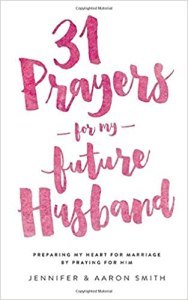
Marriage is one of the greatest gifts God ever gave to humanity, besides His son Jesus. In the Garden of Eden, God said that it was not good that man was alone. So He created Eve out of Adam’s side (Genesis 2). Desiring a counterpart and oneness with another person is built into the deepest and oldest parts of our human nature. God also tells us in His Word to present all of our requests to Him (Philippians 4:6). We want to encourage you in your desire for marriage by encouraging you and inspiring you. To pray for your heart and the heart of your future husband. We wrote 31 Prayers For My Future Husband for single or engaged women, women currently in a serious relationship, and women who are already engaged that are planning for their special day!
You don’t need to wait until after you’re married to start praying for your husband. Start praying for your future husband today!
I Kissed Dating Goodbye
Joshua Harris’s first book, written when he was only 21, turned the Christian singles scene upside down…
And people are still talking. More than 800,000 copies later, I Kissed Dating Goodbye, with its inspiring call to sincere love, real purity, and purposeful singleness, remains the benchmark for books on Christian dating.
The national #1 bestseller is honest and practical. It challenges cultural assumptions about relationships and provides solid, biblical alternatives to society’s norm.
Tired of the game? Kiss dating goodbye.
Going out? Been dumped? Waiting for a call that doesn’t come? Have you tasted pain in dating, drifted through one romance or, possibly, several of them? Ever wondered, Isn’t there a better way?
I Kissed Dating Goodbye shows what it means to entrust your love life to God. Joshua Harris shares his story of giving up dating and discovering that God has something even better. A life of sincere love, true purity, and purposeful singleness.
Praying for Your Future Husband: Preparing Your Heart for His
Have you ever thought about praying for your future husband?
Will it make a difference?
There’s only one way to find out…
From when we were small girls, most of us dream of “The One,” our future husband. We think about what it would be like to be a bride. We wonder who that special guy is and when we’ll find him. The great news is that what you do now can make a difference in your life and the life of your future husband!
Authors and good friends Robin Jones Gunn (Christy Miller series) and Tricia Goyer (author and former teen mom) believe God answers women’s prayers for husbands. Even husbands they may not meet for years. They invite young women to pray boldly for their future mate … while also asking God to prepare their own hearts.
In Praying for Your Future Husband, Robin and Tricia share their two vastly different experiences. Including the things they did right and the mistakes they made on the path to meeting and marrying their husbands. Each chapter includes helpful Bible verses, prayers, and practical application. With true stories of women who prayed for a husband and how God answered in remarkable ways.
God has a beautiful romance prepared for you. Prayer is the key to unlocking the love story … with your future husband and with God, the lover of your soul.

Falling in love is easy. Staying in love—that’s the challenge. How can you keep your relationship fresh and growing amid the demands, conflicts, and just plain boredom of everyday life?
In the #1 New York Times international bestseller The 5 Love Languages, you’ll discover the secret that has transformed millions of relationships worldwide. Whether your relationship is flourishing or failing, Dr. Gary Chapman’s proven approach to showing and receiving love will help you experience deeper and richer levels of intimacy with your partner—starting today.
The 5 Love Languages is as practical as it is insightful. This new edition reveals intrinsic truths and applies relevant, actionable wisdom in ways that work.
The Purpose Driven Life: What on Earth Am I Here for?
What on earth am I here for? A 40 day purpose campaign to discover the answer.
The New York Times #1 bestselling book by Pastor Rick Warren that helps you understand and live out the purpose of your life.
Before you were born, God already planned your life. God longs for you to discover the life he uniquely created you to live–here on earth, and forever in eternity. Let The Purpose Driven Life show you how. As one of the bestselling nonfiction books in history, with more than 35 million copies sold, The Purpose Driven Life is far more than just a book; it’s the road map for your spiritual journey. A journey that will transform your life.
Designed to be read in 42 days, each chapter provides a daily meditation and practical steps to help you discover and live out your purpose, starting with exploring three of life’s most pressing questions:
The Question of Existence: Why am I alive?Question of Significance: Does my life matter?The Question of Purpose: What on earth am I here for?The Power of a Praying Woman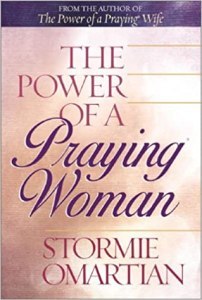
Stormie Omartian’s bestselling books have helped hundreds of thousands of individuals pray more effectively for their spouses, their children, and their nation. Now she has written a book on a subject she knows intimately: being a praying woman.
Stormie’s deep knowledge of Scripture and candid examples from her own prayer life provide guidance for women who seek to…
trust God with deep longings, not just pressing needscover every area of life with prayermaintain a right heart before GodEach segment concludes with a prayer women can follow or use as a model for their own prayers.
Women of all ages will find hope and purpose for their lives with The Power of a Praying® Woman.
Savoring Single
Why savoring single? Because you were meant to enjoy it!
Finding purpose, knowing love, and experiencing adventure arent reserved solely for the married girls! You can enjoy a full and vibrant life even while being single. Its also a perfect time to partner with what God wants to develop in you through this once-in-a-lifetime part of your journey! Girl, being single is okay. There is a purpose for it, and it wont last forever. So savor it!
Finally the Bride: Finding Hope While Waiting
Why Would God Care About My Love Life? From the woman behind the screenplay and novel, Never the Bride, comes a roller coaster of a love story with God.
Cheryl McKay pulls no punches about what it’s really like to be single, with your age creeping up, and no end in sight to the wait for love and marriage.
It seems that many years ago, God asked Cheryl to surrender the pen she was using to write her love story. All He wanted was carte blanche. No problem, right? Cheryl tentatively conceded—that is, until it became apparent that the Almighty had no intention of conforming to her writing schedule, much less the tick of her biological clock.
In fact, He blew every deadline she ever attempted to set. As romance seemed to pass Cheryl by, she couldn’t help but question: Could God really be trusted to bring her the love of her life? Written during a long wait, this book opens up Cheryl’s painfully honest, personal journals. She explores what it’s like to enlist in God’s Marriage Boot Camp, and how to survive singlehood year after solitary year.
Cheryl wrestles with her Creator over multiple best friends that never see her “that way.” Then there are those lists of what she wanted. You know, the ones she revised a billion times then laminated for safekeeping. She watches, bewildered, as much younger women find love that seems to elude her. Through it all, she falls head over heels for a God who proves Himself to be as resistant to her controls as He is faithful beyond her wildest dreams.
Are you still waiting? Have you lost hope? Venture to victory with a woman who knows just how hard it is to wait for the day when you are Finally the Bride.
Go Bravely: Becoming the Woman You Were Created to Be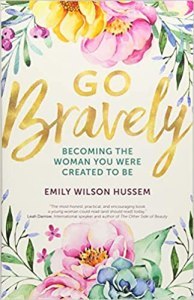
As a young Christian woman, do you struggle with insecurities and feel bogged down by the pressures and expectations of society? Do you find it challenging to take care of yourself and be a faithful daughter of God?
Emily Wilson Hussem used to feel the same way. In Go Bravely, the Catholic musician and speaker offers twenty bits of advice. It will equip you to tackle your deepest concerns about relationships, self-esteem, and dating while strengthening your faith at the same time.
“Sometimes even the smallest acts of living out faith require great bravery.”
In Go Bravely, Wilson Hussem offers readers warm and friendly encouragement . She shares her experiences with other young women as their youth minister. And her own struggles with insecurity, relationships, loving and forgiving herself, and living her faith. You’ll feel right at home as she challenges you to be a light in the world while simultaneously offering you easy-to-digest advice on your most pressing questions.
Fresh off figuring out who she is as a daughter of God, how to cultivate healthy friendships, how to save sex for marriage, and how to develop a prayer life, Wilson Hussem gives you advice. That which she learned in the midst of becoming a young woman. Aware of the information overload that young people face today, she shares simple wisdom for bravely living your faith:
Always be kind to other women.
Work hard at what you love.
Recognize God’s plan for your life.
Remember that nobody is perfect.
Cultivate authentic friendships.
These are basic ideas, Wilson Hussem says, but taking care of yourself and loving others are easy tenets of our faith to forget. A book that can be read in short snippets or in one sitting, Go Bravely offers you the encouragement and tools you need to live out your Christian faith with purpose and zeal.

n their most popular book, bestselling authors Eric and Leslie Ludy challenge singles to take a fresh approach to relationships in a culture where love has been replaced by cheap sensual passion. When God Writes Your Love Story shows that God’s way to true love brings fulfillment and romance in its purest, richest, and most satisfying form. This new edition includes an extra chapter from Leslie Ludy about the surprises of life after marriage!
“I had dreamed of a perfect love story for my entire life. But somewhere in the midst of the endless cycle of temporary romances, my dreams had shattered.” How can I find a love worth waiting for?
Lay the foundation now—whether you’ve met your future spouse or not—for a lifelong romance. Bestselling authors Eric and Leslie Ludy invite you to discover how beautiful your love story can be when the Author of romance scripts every detail.
Eric and Leslie Ludy want to offer an exciting vision of hope, proving that the Author of romance is alive and well and that true and lasting love can become a reality. Using the “four secrets to an amazing love story,” Eric and Leslie present a Christ-centered approach to building a relationship that will stand the test of time.
Captivating: A Guided Journal to Aid In Unveiling the Mystery Of A Woman’s Soul
Every little girl has dreams of being rescued by the hero, of being swept away into a great adventure, of being the beautiful princess. Sadly, when women grow up, they are taught to be tough, efficient, and independent. Many Christian women are tired, struggling under the weight of the pressure to be a “good servant,” a nurturing caregiver, passionate lover, or capable home manager.
What the Wild at Heart Field Manual did for men, the Captivating: A Guided Journal can do for women. By revealing the three distinctly female desires every woman shares, John and Stasi Eldredge invite participants to recover their feminine hearts. Even some which may have suffered many wounds but were originally defined in the image of a passionate God.
The Seven Big Myths about Marriage: What Science, Faith and Philosophy Teach Us about Love and Happiness
This work explores some of the most interesting and vexing problems in contemporary life. Appealing to reason rather than religious authority, the book tackles the most controversial positions of the Catholic Church. On contraception, on marriage, on reproductive technologies, on cohabitation, and on divorce – arguing for the reasonableness of the Church’s views on these issues.
The book’s interdisciplinary approach, following the precedent of Thomas Aquinas. It looks to human happiness and fulfillment, properly understood, in seeking the answers to questions about how to live. The book aims to show to skeptical readers that what the Catholic Church teaches about controversial issues is rationally justified by considering evidence from psychology, sociology, and philosophy. The foundation of Kaczor’s approach is happiness. We all want to be happy.
Get Lost: Your Guide to Finding True Love
Have you ever ditched a friend for a guy? Filled your journal with more thoughts about guys than God? Found yourself jealous because that other girl gets all the dates? Maybe it’s time to get lost—in God.
Discover how to get so lost in God that a guy has to seek Him to find you.
Dannah Gresh traces God’s language of love through Scripture to help you pursue your heart’s deepest desires. And seek love the way God designed it to be. Because once you identify your true longings and let God answer them. You’ll know just how to respond when romantic love comes along.
With a guided ten-day Love Feast Challenge, Get Lost will help you see for yourself how getting lost in God opens the door to lifelong fulfillment.

In Love That Lasts, New York Times bestselling author of Jesus > Religion Jefferson Bethke and his wife, Alyssa, expose the distorted views of love that permeate our culture and damage our hearts, minds, and souls.
Drawing from Jeff’s “prodigal son” personal history. Additionally, from Alyssa’s “True Love Waits” experience, the Bethkes point to a third and better way. Blending personal storytelling with biblical teaching, they offer readers an inspiring, realistic vision of love, dating, marriage, and sex.
Lady in Waiting: Becoming God’s Best While Waiting for Mr. Right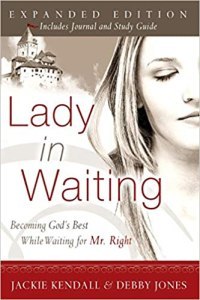
With humor, honesty, and biblical truths, the authors help point women to being the right woman and not just finding the right man. By studying the biblical character Ruth, women learn the characteristics that every woman of God should develop. This expanded edition of the original best-seller includes a personal journal and study guide.
Ten Reminders For The Single Christian Woman
Are you a single Christian woman wondering what’s going to happen next in your life?Is your faith wavering as you wait for that special “someone”?Have you been praying and enduring for months only to go though another breakup, failed relationship or bad decision?If this is you, then this book is for you. In Ten Reminders for the Single Christian Woman, Dr. Pamela Q. Fernandes talks about why you should stay optimistic and remain in God’s love. As a follow up book in her Ten Reminder Series, she talks about her own struggles with faith, discerning a vocation and finding meaning as single Christian woman.
Do You Have Any Recommendations?These are just my recommendations of books for single Christian women. I’m sure there are tons more. Do you have any favorites that you’ve read and enjoyed. Share them in the comments below so others can read and be inspired.
The post 16 Best Books for Single Christian Women appeared first on PAMELA Q. FERNANDES.
May 10, 2021
74 How To Start Christian Homeschooling?
“Our goal is to help our children be ready for heaven.”
Susanna Spencer
 Who is Susanna Spencer?
Who is Susanna Spencer? Susanna Spencer
Susanna SpencerSusanna Spencer has a masters in theology from the Franciscan University of Steubenville. She is a writer and the theological editor for Blessed is She, a co-author of the children’s devotional book, Rise Up: Shining in Virtue, and a regular blog contributor at the National Catholic Register. She is a homeschooling mother of four and lives with her family in St. Paul, Minnesota. You can find out more at her website.
How To Start Christian Homeschooling?PQF · 74 How To Start Christian Homeschooling?In this episode, Susanna Spencer tells us how Christian families can start homsechooling. She explains:
– What is homeschooling?
– Why is it a great choice for Christian families?
– What are the first steps to take? And then how do you go about it?
We’ve seen how teaching children Christian virtues in the home produce saints. Since we’re all going through an extensive lockdown and an unpredictable year, we’re seeing lots of parents struggling. Homeschooling is not new. However, many parents are now beginning to see the advantages of Christian homeschooling. Given all the recent changes in the public sphere, the lack of any moral code whatsoever, I’m sure many others are thinking of going this route.
I know a few of my friends even sought spouses who would support this idea before pursuing courtship. I also tutor kids in Maths and Science when a homsechooling parent finds it tough. So I decided to reach out to Susanna who has been successfully doing this for her children.
I reached out to her and she was so prompt about talking about this despite her busy schedule. In fact, on the day that we were supposed to record, I lost Wi-fi and Susanna was so gracious to reschedule. This woman has a lot of patience. And I was so grateful that she gave me a second chance to record.
As you can hear in the podcast, Susanna talks about lots of benefits of homseschooling especially for Christian families. Her family begins the day with prayer and teaching subjects that evidence God and virtues.
Most days, her kids finish school before lunch and then have the entire afternoon to play. I love how she talks about praying while deciding to do this.
Benefits of Christian HomeschoolingChoosing to homsechool your kids is a vocation.
Susanna Spencer
The biggest advantage Susanna says she sees is unity. It’s really nice to see unity among the kids. You can teach children what’s really important and focus on what matters.
It’s also less expensive.
You can make teach as much religion as you want. Her kindergarten son knows Latin prayers! Wow!
You can teach truth.
When it comes to your spouse, Susanna has excellent advice as she recommends praying for the other person. She says, “God can change people’s hearts.”
For those interested, here’s the book she recommends by Cathy Duffy, How To Choose Homeschool Curriculum. You can read this before you decide and discern what’s best for your child.
The online course website she mentioned in the podcast: https://homeschoolconnections.com/
In the end, Susanna does say, its a sacrifice and it will have its challenges. What’s right for another family might not be so for you. Don’t compare and don’t feel pressured. Take it a year at a time. You can always switch.
ENJOYED THIS PODCAST?We hope you enjoyed this podcast. Check out our podcasts on Raising Children of Character and Teaching Faith. If you liked this podcast, like us, leave us a comment and share our episodes on social media with those who may benefit from it. If there is a particular saint that you would like to hear about us, tell us and we’ll add him or her to our future episodes.
We are on iheartradio, Stitcher, Itunes, Spotify, Pandora and tunein.com. We’d love to hear from you. If you hear us on online, please rate and review us.
The post 74 How To Start Christian Homeschooling? appeared first on PAMELA Q. FERNANDES.
May 3, 2021
10 Stunning Hospital Architecture Designs
Since I’m doing my best to stay off social media after Lent, I’ve filled my time going over things I like; football (Hala Madrid!), listening to funny podcasts, reading, imagining traveling (haha) and looking at beautiful architecture. Architecture is one of the first things I check out when I visit a new city. Usually in the form of a walking tour just to take in the buildings and their design. Over the last few months, I’ve been looking at hospital architecture. I’m going to share the 10 most stunning hospital architecture designs.
10 Stunning Hospital Architecture DesignsIt was really hard to pick just 10 because there are so many stunning hospital architecture designs that I just love. I’ve been to many hospitals. Some without elevators, others with very distant emergency rooms, others without waiting areas. You can tell when a place is not very well designed, especially if you’re living in them 24/7.
Disclaimer: These are real portfolio pictures. These images belong to the photographers. All credit goes to the architect and photographer listed and cited below.
1. Hospital Manta, EcuadorBuilt by Spanish architects, PMMT; this is one of my favorite designs. I love that it was designed to be earthquake resistant after the previous earthquake. It’s a stunning piece of work. Inside the hospital, there’s so much natural light and trees.[1] Can I just say that I love, love the design? Inside, it uses cobble stones and natural greenery while still retaining a very sleek look. This is in keeping with PMMT’s fluid design. The hospital is designed in 7 basic blocks.
 Photographs © Sebastián Crespo / Bicubik2. Rigshospitalet Hospital North Wing, Denmark
Photographs © Sebastián Crespo / Bicubik2. Rigshospitalet Hospital North Wing, DenmarkWhen I first saw this design, I didn’t like it that much. The bridge seemed like too much glass. And inside, that just makes everything hot. Designed by , this epic hospital covers 54000m2. How cool is this OT?
They actually prioritized patient’s comfort and needs of the medical staff. It is shaped like a zigzag and is intersected by a main ‘artery’ route that runs through. The zigzag structure means quiet zones and patient rooms are located away from the central corridor which are mostly used by staff, thereby avoiding unnecessary disturbances. [2]

 Photographs © 3. La Florida Metropolitan Hospital Clinic, Chile
Photographs © 3. La Florida Metropolitan Hospital Clinic, ChileThe Metropolitan Clinical Hospital consists of 67,504 m² by , . The third floor terrace is supposedly a green roof, planted with different species of sedum. I’m guessing that would keep the place very cool. It also has views to the Andes mountains, and the valley of Maipo.
 Photographs © , 4. The Christ Hospital Joint and Spine Center, US
Photographs © , 4. The Christ Hospital Joint and Spine Center, USArchitects produced this stunning hospital design. Inside it’s just as lovely. This 381,000-square-foot, seven-story facility has 90 inpatient rooms and 12 surgical suites. The building has lots of natural light and the best part decentralized nursing desks so nursing staff are closer to their patients.
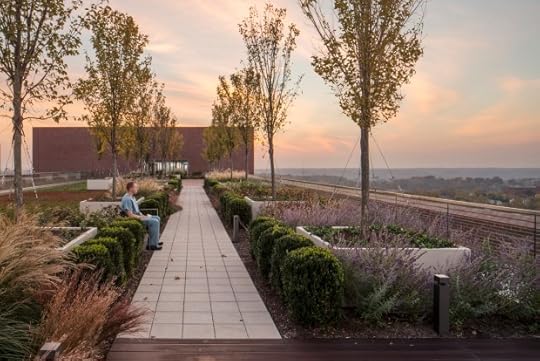
 Photographs © 5. Ann & Robert H. Lurie Children’s Hospital, US
Photographs © 5. Ann & Robert H. Lurie Children’s Hospital, USArchitects: , , produced this new, 22 story, 1.25 million square foot stunning design. Its interiors are just as pretty. And it includes two bridges to the adjacent Prentice Women’s Hospital, a suspended whale exhibit, aquarium, garden market-themed food court, healing garden, and a tree house. This would make it more welcoming for kids.

 Photographs © 6. San Juan de Dios Hospital, Spain
Photographs © 6. San Juan de Dios Hospital, SpainArchitects: produced this extension of San Juan de Dios hospital in Pamplona Spain. The original building was designed by Víctor Eusa in 1935 and completed in 1943. The original designs were somehow never completed and newer problems emerged. The architects tried to maintain the original designs and the results are stunning.
 Photographs © 7. Adamant Hospital, France
Photographs © 7. Adamant Hospital, FranceI’m not a fan of wood. I don’t even like wooden cladding. The only reason this made my list was because it was built on water. How cool is that? Built by , a psychiatric hospital rocked by the river, is in the center of Paris. During the construction of this stunning hospital design, workers, patients and caregivers discussed the methods of construction of the building.
 Photographs © 8. Xiamen Humanity Hospital, China
Photographs © 8. Xiamen Humanity Hospital, ChinaI actually like all of ‘s designs. They’re clean and crisp. They allow lots of natural light and natural plants. The modular design spreads across more than 300,000 square meters of buildings. White represents the spirit of Xiamen’s sunshine coast, then wood color expresses the tradition of shipbuilding and furniture here. So, there’s a lot of thought put into the colors and design of the interiors to reflect the culture.

 Photographs © 9. Northern Beaches Hospital, Australia
Photographs © 9. Northern Beaches Hospital, Australia70000m2 of space at Northern Beaches Hospital. Architects created this design keeping in mind patients and the need for less anxiety driven spaces. From what I saw of the rest of the renderings, the medical rooms are spacious, the stairs and corridors have an open floor plan which I really like. Most hospitals have concealed staircases, which are often dark, lonely and force you to take an elevator.
 Photographs © 10. Meander Medical Center, Netherlands
Photographs © 10. Meander Medical Center, NetherlandsArchitects: created this stunning hospital architectural design with m². This only has provate rooms to allow people to recover with lots of natural light. All public spaces are visible while the wards are very private. Each room having its own bath. For visitors there are lounges with a pantry, computer desks and other basics.

 Photographs © , What’s Your Favorite Hospital Design?
Photographs © , What’s Your Favorite Hospital Design?I’m sure there are plenty of well designed, well constructed hospitals out there. Do you have one that comes to mind? Send me an image and I’ll be happy to share it. Tell me what you like about the design.
Citations1. “Hospital Manta / PMMT” [Hospital Manta / PMMT] 21 Nov 2019. ArchDaily. Accessed 23 Apr 2021. <https://www.archdaily.com/928430/hospital-manta-pmmt> ISSN 0719-8884
2. “Rigshospitalet Hospital North Wing / LINK arkitektur + 3XN” 29 Sep 2020. ArchDaily. Accessed 25 Apr 2021. https://www.archdaily.com/948484/rigshospitalet-hospital-north-wing-link-arkitektur-plus-3xn ISSN 0719-8884
3. “La Florida Metropolitan Hospital Clinic / Murtinho+Raby Arquitectos (Pedro Murtinho, Santiago Raby) + BBATS Consulting & Projects SLP (Silvia Barbera, Jorge Batesteza, Cristóbal Tirado)” 13 Apr 2015. ArchDaily. Accessed 3 May 2021. https://www.archdaily.com/617595/la-florida-metropolitan-hospital-clinic-bbats-consulting-and-projects-slp-murtinho-raby-arquitectos ISSN 0719-8884
4. “The Christ Hospital Joint and Spine Center / SOM” 10 Mar 2016. ArchDaily. Accessed 3 May 2021. ISSN 0719-8884
5. “Ann & Robert H. Lurie Children’s Hospital of Chicago / ZGF Architects + Solomon Cordwell Buenz + Anderson Mikos Architects” 14 Jan 2019. ArchDaily. Accessed 25 Apr 2021. <https://www.archdaily.com/909319/ann-and-robert-h-lurie-childrens-hospital-of-chicago-zgf-architects-plus-scb-architects-plus-anderson-mikos-architects> ISSN 0719-8884
6. “Refurbishment and Extension of San Juan de Dios Hospital / Ah Asociados” 18 Mar 2018. ArchDaily. Accessed 3 May 2021. <https://www.archdaily.com/873094/refurbishment-and-extension-of-san-juan-de-dios-hospital-ah-asociados> ISSN 0719-8884
7. “Adamant Hospital / Seine Design” 24 Feb 2020. ArchDaily. Accessed 3 May 2021. <https://www.archdaily.com/934267/adamant-hospital-seine-design> ISSN 0719-8884
8. “Xiamen Humanity Hospital / Lemanarc SA” 10 Jan 2020. ArchDaily. Accessed 25 Apr 2021. <https://www.archdaily.com/931475/xiamen-hongai-hospital-lemanarch-sa> ISSN 0719-8884
9. “Northern Beaches Hospital / BVN” 24 Aug 2019. ArchDaily. Accessed 25 Apr 2021. <https://www.archdaily.com/923536/northern-beaches-hospital-bvn> ISSN 0719-8884
10. Meander Medical Center / atelierpro” 19 May 2014. ArchDaily. Accessed 3 May 2021. <https://www.archdaily.com/506479/meander-medical-center-atelierpro> ISSN 0719-8884
The post 10 Stunning Hospital Architecture Designs appeared first on PAMELA Q. FERNANDES.
April 15, 2021
73 How to Include People With Disability in the Church?
“One of the central messages of Christianity and the example of Jesus is the preferential option for the marginalized.”
Madeline Jarrett
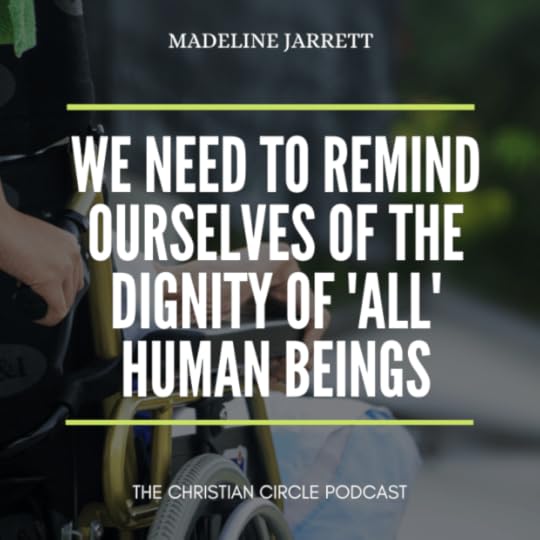 Who is Madeline Jarrett?
Who is Madeline Jarrett? Madeline Jarrett
Madeline JarrettAn Indiana girl at heart, Madeline graduated from the University of Notre Dame with majors in Theology & Psychology. After college, she completed an AmeriCorps service program in Chicago. There she taught English as a second language, creative writing, and art at a small Catholic grade school. She completed her Master of Divinity at Boston College in 2018. For the past three years, she has been teaching Theology and Psychology at an all-girls Catholic high school outside of Boston. In the fall of 2021, she will return to Boston College to begin a PhD program in Systematic Theology. Presently, her passions include spirituality and the body, art, teaching, and writing. You can find Madeline on Instagram @the_homecoming_, where she shares her experience of embodiment, spirituality, disability, and the occasional craft project.
How to Include People of Disability in the Church?PQF · 73 How to Include People of Disability in the Church?In this episode, Madeline Jarrett tells us how we can be more inclusive of people with disabilities. She explains:
– What are the challenges that people with disabilities face in all churches?
– What are the changes we can make to make it more accessible for all?
– How can we address this lack of inclusivity physically, emotionally, and spiritually as well?
Surprisingly, I didn’t quite plan this topic. In fact, it quite miraculously fell into my lap. I read a post by Erin Murphy And so I started looking for someone to talk about this. Another miracle later, I saw that Madeline had written something along similar lines in her post, “Are All Welcome?”
She agreed to talk to me. Not only was I blown away by her perspective but also her infectious joy and passion for Christ and His church.
Participation By All For AllI particularly loved how she simply states that the goal should be that people with disabilities should participate at ALL levels of the Church. That includes, leadership, clergy, priesthood, ministries and laity. Her message is even simpler. Let’s raise awareness and introspect.
Review Your Community and Church: Are people with disabilities welcome? Do they feel so? Have you asked them?Are there structural obstacles and challenges for people with disabilities? Lack of elevators, stairs, inaccessible altar, lack of ramps, inaccessible bathrooms, railings, places for wheelchairs, volunteers for the doors, arrangements for the visually impaired, projectors for the hearing impaired, areas for children with neurological challenges, etc.How accessible are our ministries for the participation for people with disabilities? Can they be readers, choir members, servers, greeters, and leaders?Additionally, is our community and fellowship reaching out to them not just at Church but beyond the church door as well?Emotionally and spiritually, how do we address the complexities and pain of people with disabilities?“Once we start talking about these issues of disability in the Church, it’s hard to unsee them.”
Madeline Jarrett
Finally, we have to introspect as Madeline makes a very good point, our bodies are in decline. There will come a time when we will all face these challenges. It is up to us to make Christ and kingdom-work welcoming for all who want to sit at His banqueting table. No Christian left behind. Or rather, no human being left behind!
ENJOYED THIS PODCAST?We hope you enjoyed this podcast. Check out our podcasts on Anger and Mother Teresa. If you liked this podcast, like us, leave us a comment and share our episodes on social media with those who may benefit from it. If there is a particular saint that you would like to hear about us, tell us and we’ll add him or her to our future episodes.
We are on iheartradio, Stitcher, Itunes, Spotify, and tunein.com. We’d love to hear from you. If you hear us on online, please rate and review us.
The post 73 How to Include People With Disability in the Church? appeared first on PAMELA Q. FERNANDES.
73 How to Include People of Disability in the Church?
“One of the central messages of Christianity and the example of Jesus is the preferential option for the marginalized.”
Madeline Jarrett
 Who is Madeline Jarrett?
Who is Madeline Jarrett? Madeline Jarrett
Madeline JarrettAn Indiana girl at heart, Madeline graduated from the University of Notre Dame with majors in Theology & Psychology. After college, she completed an AmeriCorps service program in Chicago. There she taught English as a second language, creative writing, and art at a small Catholic grade school. She completed her Master of Divinity at Boston College in 2018. For the past three years, she has been teaching Theology and Psychology at an all-girls Catholic high school outside of Boston. In the fall of 2021, she will return to Boston College to begin a PhD program in Systematic Theology. Presently, her passions include spirituality and the body, art, teaching, and writing. You can find Madeline on Instagram @the_homecoming_, where she shares her experience of embodiment, spirituality, disability, and the occasional craft project.
How to Include People of Disability in the Church?PQF · 73 How to Include People of Disability in the Church?In this episode, Madeline Jarrett tells us how we can be more inclusive of people with disabilities. She explains:
– What are the challenges that people with disabilities face in all churches?
– What are the changes we can make to make it more accessible for all?
– How can we address this lack of inclusivity physically, emotionally, and spiritually as well?
Surprisingly, I didn’t quite plan this topic. In fact, it quite miraculously fell into my lap. I read a post by Erin Murphy And so I started looking for someone to talk about this. Another miracle later, I saw that Madeline had written something along similar lines in her post, “Are All Welcome?”
She agreed to talk to me. Not only was I blown away by her perspective but also her infectious joy and passion for Christ and His church.
Participation By All For AllI particularly loved how she simply states that the goal should be that people with disabilities should participate at ALL levels of the Church. That includes, leadership, clergy, priesthood, ministries and laity. Her message is even simpler. Let’s raise awareness and introspect.
Review Your Community and Church: Are people with disabilities welcome? Do they feel so? Have you asked them?Are there structural obstacles and challenges for people with disabilities? Lack of elevators, stairs, inaccessible altar, lack of ramps, inaccessible bathrooms, railings, places for wheelchairs, volunteers for the doors, arrangements for the visually impaired, projectors for the hearing impaired, areas for children with neurological challenges, etc.How accessible are our ministries for the participation for people with disabilities? Can they be readers, choir members, servers, greeters, and leaders?Additionally, is our community and fellowship reaching out to them not just at Church but beyond the church door as well?Emotionally and spiritually, how do we address the complexities and pain of people with disabilities?“Once we start talking about these issues of disability in the Church, it’s hard to unsee them.”
Madeline Jarrett
Finally, we have to introspect as Madeline makes a very good point, our bodies are in decline. There will come a time when we will all face these challenges. It is up to us to make Christ and kingdom-work welcoming for all who want to sit at His banqueting table. No Christian left behind. Or rather, no human being left behind!
ENJOYED THIS PODCAST?We hope you enjoyed this podcast. Check out our podcasts on Anger and Mother Teresa. If you liked this podcast, like us, leave us a comment and share our episodes on social media with those who may benefit from it. If there is a particular saint that you would like to hear about us, tell us and we’ll add him or her to our future episodes.
We are on iheartradio, Stitcher, Itunes, Spotify, and tunein.com. We’d love to hear from you. If you hear us on online, please rate and review us.
The post 73 How to Include People of Disability in the Church? appeared first on PAMELA Q. FERNANDES.
April 10, 2021
Birthday Release: Cinders of Castlerea

Despite all the upheavals, rejection, and sadness, I’ve decided to go ahead with the release of Cinders of Castlerea on my birthday! So on the 30th of April, I’m going to re-release Cinders of Castlerea. This romantic suspense was previously published by Solstice Publishing and since I received the rights back, I thought to put it back out there for my readers.
I’m going wide so it will be available everywhere. It is available on Preorder on Amazon right now. I redid the cover and I love the work Les did on it. What do you think? Do you like my new cover?
I’ve re-edited the book as well and made subtle changes. For all those reviewers who complained. I haven’t changed the ending and no, there’s no sequel.
BlurbDangerously attractive businessman, Charles Kilbrooke is hunting the arsonist that killed his fiancée in Castlerea. Blaming himself for her death, he returns to the small Irish town with a ruthless plan. He refuses to succumb to the exotic beauty whose creating mayhem in his life.
Anika Bassein has changed everything about her past. She wants nothing to do with fire ever since her parents B&B was set ablaze. When she sees an ad with free lodging in an obscure holiday town, she accepts. She’s aware of the charged atmosphere crackling with her handsome neighbor.
But where there’s smoke, there’s fire and there are no small fires!
Trailer: Cinders of CastlereaI’m also sharing the trailer here. I love creating book trailers and this one is not as happy as my usual ones given that the genre is romantic suspense. The music is titled Dying Wish! I love how eerie it sounds. Do you?
Book ReleaseI’m not sure if I’ll be doing a special event for book release. As those of you who read my newsletter and close circle know, I’ve been down in the dumps lately. And there are only so many punches you can take in life. I’ve kind of decided to release the book, given that two more releases from Inkspell Publishing and Touchpoint Press are confirmed and a fourth might, ” just might” get squeezed through. That’s a lot of publishing work for 2021.
I’m also running a giveaway until my birthday. 100 Kindle copies of THE MILANESE STARS are being given away as part of my birthday celebrations!
Pre-order NowCinders of Castlerea is available for preorder. Get your copy and let me know what you think about the cover and trailer! I’d love to hear from you.
The post Birthday Release: Cinders of Castlerea appeared first on PAMELA Q. FERNANDES.
March 13, 2021
Preventing Conflicts Between Administrators & Physicians

If anything that has been made clear during these strenuous times, it’s how wide the gulf yawns between administrators & physicians. Both are essential for large health care institutions. The administrators won’t take a smaller paycheck but expect the volume of the patients to increase. The doctors understand the costs but see past the insurances. They’re trained to be logical following the standard algorithms to investigate and treat to achieve the desired outcome. I’m not taking sides here. I’ve worked in places where the money was the focus and in places where the patient was the focus. It’s a big difference in work environment.
Both sides are correct. There are costs. Do we really need to occupy an ICU bed and use the most expensive tech for this terminally ill patient, ask the administrators. While the physician doesn’t quite know the numbers and costs associated with each of their medical decisions. Few doctors have taken any finance courses.
So who’s right?There’s no winner. Yet, it seems that with every disagreement, the divide widens. Studies have shown that adhering to the principles of organizational justice would enable us to reduce conflicts while striving to provide value for patients. Organizational what?
“Organizational justice refers to employee perceptions of fairness in the workplace. These perceptions can be classified into four categories: distributive, procedural, informational, and interactional. Distributive justice reflects perceptions regarding fairness of outcomes, while procedural justice reflects perceptions of processes that lead to these outcomes. A third type of justice, informational justice, relates to the accounts provided for justice-related events. Finally, interpersonal justice reflects perceptions of interpersonal interactions and treatment. Research demonstrates that, although correlated, these specific justice judgments are each predictive of work- and worker-related outcomes.” (From Oxford)
How to Prevent Conflicts Between Administrators & Physicians?Let’s do away with the big words. That word salad doesn’t really help people on the floors. In theory, yes but practically no. It takes years to build that kind of an organization and if changes are needed they are slow to come. Here are a few ways to resolve conflicts.
Do Your Homework Before EmploymentResearch the organization you work for. Read their mission statement. Why? Because it tell you what the goal is? Read between the lines. You can tell just by looking at a hospitals’ website where the focus is. Is it directed towards the patient or to establish a brand? What is the goal of the hospital? Physicians rarely research the health of the finances of an organization. The moving fees, the bonuses, and the pay package are all that interests us. Maybe review the financial standing of a hospital. Who are their investors? Do they have loan payments? Are they subsidized? Do they get grants? Their financial state will determine the ferocity of the administration and guide most of their policies. Find out what the work culture is like and what is the management style: autocratic or democratic?
Keep Your Own RecordsSo now you’ve started working. There’s going to be the initial honeymoon period. Then a first quarterly review to see your numbers. Emails will arrive and then administrators will ask you to call in the annuals, give everyone a Pap smear and vaccinate left, right and center. It’ll feel like squeezing blood out of a stone. Most of the time, you’re doing your bit, scheduling follow ups but the numbers might not add up. This could be because insurance hasn’t cleared payments and data is usually a quarter late. Having your assistant keep a physical record/paper trail can help you when you attend these heated meetings. Your own data will be helpful. Maintain your own records of what you’ve done and keep checking your own numbers. Believe me, you will need them.
Communicate, CommunicateCommunicate at meetings. Most administrators are people with MBA’s and or MHA’s. At best they’ve done a one year internship followed by a job at a hospital. They bring the culture of that hospital with them. They look at data and numbers. They’re not looking at how long a neurological examination takes. When they say 15 minutes, they expect a wham-bam thank you mam in twenty minutes. Sad. However, you will have to explain exactly why you cannot finish writing forty notes the same day. Or why you need a Type 1 DM person to have frequent HbA1c’S every quarter, even though they’re young. You have to educate them.
Even if they sound like they know, most of the time they don’t. I’ve met people who will throw out a lot of words that they’ve picked up from wherever but can’t understand medical reasoning. We shouldn’t expect them to because we’ve spent 10 years of our lives just studying this in various formats. Neither will they understand that with this job comes the responsibility to be right every single time. A nurse practitioner can go home every night, knowing that if something does go wrong, its the license of the MD under whose umbrella they practice that’s at stake. The same goes for every other member of the medical team. Every decision made by a doctor thus is stress inducing because you have to get it right every single time.
Ask for TargetsBe transparent when it comes to this. After working in corporate healthcare, I’ve come to talk the language of management without any fear or shame. In many places, it’s still taboo or the data is sugarcoated with statements like “the hospital is not doing well” and “doctors need to do more.” No. You need to have numbers. This is the number I have achieved and this is what is expected of me. What is the target set for me/or my department? Is there room to increase walk-ins/ annuals? If yes, they will be scheduled. If not, and there’s no way to stretch the schedule, then no. The targets have to be realistic for the numbers and the money.
Clarify your roleAt many places, doctors are expected to shoulder the marketing. They’re told to make phone calls for potential patients from health care screenings/fairs/ signup sheets. As a physician, set the boundaries early. It’s not your job to bring in new patients. Your job is to treat people. If you’re doing anything other than that you’re wasting your time and you’re probably ineffective anyway. Just do your job and do it well.
The Patient Always Comes FirstWhen it comes to the money, the insurance, the payments, the backend costs and all those minute details, keep putting your patients first. They are the reason why you exist. They make take up a hospital bed, require advanced care for longer periods but never make your decisions based on money alone. Work with administrators to find a way to make it work. They are after all human.
The Battle and the VictorThere’s no victor here. At the peak of the pandemic last year, hospital laid off 1.4 million healthcare workers last year. Most of them medical staff and nurses. Non-medical staff and administration retained their jobs. And while I’m not claiming that they should have, we’ve seen growing number of institutions with bloated management staff that need to justify their large pay. The way to do so is turning the customer into product and squeezing every last penny out of them. The only person who loses here is the patient. And let’s not forget at some point in our life, that will be every one of us.
What are your tips for resolving conflicts between administrators & physicians, let me know.
The post Preventing Conflicts Between Administrators & Physicians appeared first on PAMELA Q. FERNANDES.
March 11, 2021
72 How to Overcome Your Anger?
“We need to take our anger to God in prayer.”
William Bloomfield
 Who is William Bloomfield?
Who is William Bloomfield? William Bloomfield
William BloomfieldWilliam R. Bloomfield is an attorney in Lansing, Michigan where he lives with his wife and six children. He is a graduate of Franciscan University of Steubenville and the Ave Maria School of Law; he is also a veteran of the U.S. Navy JAG Corps. Most recently, he is the publisher of the Sacred Art Series, available through www.SacredArtSeries.com.
In this episode, William Bloomfield tells us about the sin of anger. He explains:
-Why is anger a sin and how does it manifest in us?
-What is the opposite fruit of this?
-How can we overcome our anger? Steps?
-Holy anger vs evil anger? What’s the difference?
I contacted Will after I read his post on Anger. I wanted to do a series based on the cardinal sins but didn’t know how we’d go about finding people to talk about individual sins. Will’s post was very insightful and he had covered anger in detail as well as the steps to overcome it.
I love how Will talks openly about his own experiences. And offers practical solutions as to what has worked for him in controlling his anger. Daily examination, frequent prayer, and immersion in Scripture are some of his basic tips. And yet, this advice could be applicable for any cardinal sin. He doesn’t offer answers but encourages people to introspect and question themselves about the cause for their own anger. Lastly, he also reiterates several times that we can’t do anything on our own. It’s only by God’s grace. And truly it is but by the grace of God we stand. I hope this episode challenges you as it did me when it comes to dealing with anger.
ENJOYED THIS PODCAST?We hope you enjoyed this podcast. Check out our podcasts on Lent and St. Don Bosco. If you liked this podcast, like us, leave us a comment and share our episodes on social media with those who may benefit from it. If there is a particular saint that you would like to hear about us, tell us and we’ll add him or her to our future episodes.
We are on iheartradio, Stitcher, Itunes, Spotify, and tunein.com. We’d love to hear from you. If you hear us on online, please rate and review us.
The post 72 How to Overcome Your Anger? appeared first on PAMELA Q. FERNANDES.
February 18, 2021
How to Use Pinterest to Create a Book Vision Board?
Today, I’m going to talk about how to Use Pinterest to Create a Book Vision Board. Who doesn’t love Pinterest? I started Pinterest so many years ago as a way of collecting random, pretty things. I had one for clothes and one as reminders to my younger self. I still do Pin stuff every week. In fact, I think its one of those things I see before I sleep, other than watching cute babies, cats and dogs.
How to Use Pinterest to Create a Book Vision Board?Gradually, I started boards for writing motivation and my books. I feel creating a book vision board goes a long way for authors. I started doing it after my book was over to give my cover artists an image of what was in my mind but now I’ve realized its best to start as you conceive a book.
Convey MoodWhen you start a book, you’re simply thinking in terms of the book and its feel. You’re finding your way around the book. At most, you’ll have an idea, a beginning, and an end. With Pinterest you can capture the mood of the story. Dark and pensive or light and sunny. Mystery, or romance. By picking the right images on Pinterest, you can nail down the mood of your book. If you’re busy like me then often you don’t have time to dwell on the mood of the book until you’re actually sitting at your desk and writing. I like that after a crazy day, I can just look at my book vision board and get back that mood of the book. It will help you get in the zone!
Convey Tone and PaceNow with videos added to Pinterest, you can even convey the tone and pace of the book. A fast thriller, or heist, a funny chick lit or even a historical drama, its easier to convey these details with images and video. Because your book does all the talking.
Location, location, locationWe’ve all heard that before. But adding images of the place or what it looks like in your imagination, can help you set the scene. It nails down what the setting looks like. Later when you share with an audience you can show them what you meant. I remember when I wrote Painting Kuwait Violet, people had no idea where Kuwait even was. Never mind that two Gulf Wars had been fought over it. And once they read the book, people’s idea of Kuwait was of a dry, arid desert but my Pinterest book vision board showed them the cosmopolitan side of the country. The board will capture the location of your book and its setting.
Depicts CharactersThis is so important. I have been working on my series and as the books progress and I work on other books, it can be hard keeping track of everyone’s eye color and hair color. If you create a Pinterest vision board, you will find that your character images can help you keep track of this. Just a quick glance and you can find details about the characters you’ve created.
Blueprint For Your Cover ArtistYou know when you get your cover sheet and it has the same basic questions. Mood, tone, color of the eyes,, hair, color, physical characteristics and yada. There’s nothing better than showing a cover artist the vision board you created for your book. I’ve talked extensively about how important it is to show your artist what you see. And over the years my covers are remarkably better because instead of telling my cover artists, I just show them what my book is about.


 A One Stop-Shop
A One Stop-Shop On Pinterest, today you can do wonderful things, create pins with book quotes, blurbs, reviews, encouragement from other authors, recipes and tours. There’s no other site where you can create a huge board of all the things happening to your book concentrated in one spot; not even your website. I know because I have tried and failed. So I like that I can simply pin a review, or a video, a quote lifted from my book, etc in just one spot. When it comes time to share this board, my readers, and the publishing team can picture my vision exactly.
Get PinningI’m not plugging Pinterest and saying jump on this bandwagon. I’m not keen on asking anyone to sign up to something new. If you’re creating a book board on other social media platforms that’s great but for me Pinterest has worked great. And if you’re already on there, try creating a vision board for your book before you start writing just as you would chart your outline and character sketches.
The post How to Use Pinterest to Create a Book Vision Board? appeared first on PAMELA Q. FERNANDES.
February 2, 2021
71 What Is RCIA & Steps to Join the Catholic Church
“God is waiting for you with open arms like the father of the Prodigal son. You just have to turn back to him.”
Charles Johnston
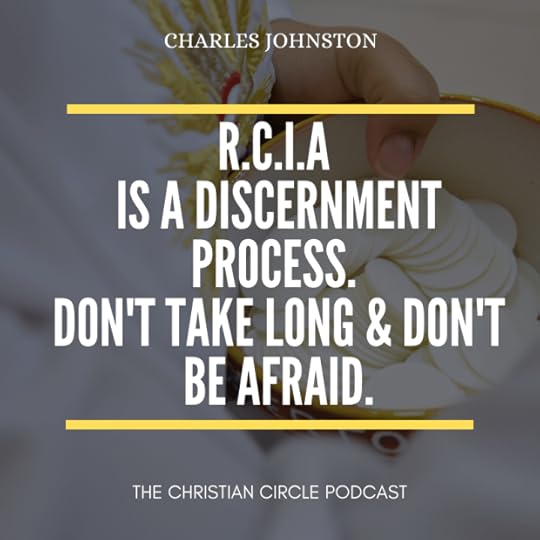 WHO IS CHARLES JOHNSTON?
WHO IS CHARLES JOHNSTON?Charles Johnston is a father and husband in Phoenix, Arizona. His conversion journey has taken years, as he felt God pulling him toward His Church but he resisted until he couldn’t take it anymore. He gave in and fell in love with His Church. He blogs for ‘NowthatImcatholic.com’
 Charles Johnston
Charles JohnstonIn this episode, Charles tells us about RCIA. He explains:
-What is RCIA?
-What is the purpose of RCIA?
-Who can sign up?
-Time period
-How does it work or take place/format?
-How has RCIA shaped your life?
The Rite of Christian Initiation of Adults (RCIA), or Ordo Initiationis Christianae Adultorum is a process in the Catholic Church for prospective converts to Catholicism who are above the age of infant baptism. Candidates get introduced to aspects of Catholic beliefs and practices.
In December 2020 instead of a retreat I had a quarantine period during Advent and so stuck during quarantine made the list of topics for this year’s podcast. I kept circling back to RCIA . And so following the prompting of the Holy Spirit I decided to add it relatively early to the podcast calendar.
I contacted Charles having known he’d already been through the process and was closely working with newer catechumens in his own parish. Soon after he wrote a post. It went viral.
In my own archdiocese various parishes have RCIA. Here’s the information they provide:
The Rite of Christian Initiation of Adults (RCIA) is a wonderful journey for designed for adults who, after hearing the Gospel of Jesus Christ proclaimed, freely desire to seek the living God and enter into full communion with the Catholic Church. The journey is one of conversion, preparation and formation which at the proper time leads towards reception of the sacraments of initiation (Baptism, Confirmation, Eucharist) that are received at the Easter Vigil.
If you are already baptized as a Catholic or received a *valid baptism from another Christian denomination (Lutheran, Methodist, Episcopalian, Anglican, Presbyterian or **Orthodox) and are seeking to prepare to make a profession of faith and full communion with the Roman Catholic Church, then you can reach out to them.
Steps to Join the Catholic ChurchThe Five Main Stages of the RCIAHere are the five main stages of the RCIA: It is not as complicated as it look.
The Period of InquiryThe PERIOD OF INQUIRY allows time:
To familiarize oneself with the Catholic Church and
To hear the good news of salvation from Jesus Christ our Savior;
It invites us to look within
This reflective period lasts as long as the person needs it to last.
The Inquirer writes a formal letter.
Some may decide that this is not the right time. Here’s one of the books Charles recommended that they use during their RCIA class.
The Period of the Catechumenate
THE PERIOD OF THE CATECHUMENATE: The firs stages of commitment:
For a person to enter this phase of RCIA, one must sincerely desire to become members of the Catholic Church.
During this phase, the catechumens now gather with the Catholic community on Sundays for the first part of the mass. We hear the Scriptures, respond, and reflect on the meaning of God’s Word for us personally and as community through the homily.
After the homily, catechumens are dismissed , and with their Catechist, to continue a process of reflection. This period, too, lasts as long as the person needs it to last. For the unbaptized, this lasts 12 months.
The Period of Purification or Illumination
THE PERIOD OF PURIFICATION corresponds to Lent:
This is a prayerful time for catechumens and candidates. They called the Elect. This period starts with the Rite of election, usually celebrated at the Cathedral Church with the Diocesan Bishop. Through this rite they are accepted as candidates for the Sacraments by the Bishop, representing the fact that this decision is not theirs alone. It takes place on the first Sunday of Lent.
Throughout Lent, they offer special prayers at the Sunday Eucharist for the catechumens and candidates. They are called scrutinies. These prayers for strengthening in grace and virtue and for purification from all past evil and from any bonds which hinder them from experiencing the love of God.
Celebrating the Sacraments of Initiation
THE SACRAMENTS OF INITIATION ARE CELEBRATED AT THE EASTER VIGIL:
By the waters of baptism, a person passes into the new life of grace and becomes a member of the Body of Christ.
Anointing with special holy oil called chrism seals the initiation by the power of the Holy Spirit and participation at the Table of the Lord in the eucharist marks full membership in the church.
Even though students are on Easter-break, those to be initiated and their Sponsors stay to take part in the Holy Sacraments of Initiation.
Period of Mystagogy
THE PERIOD OF MYSTAGOGY lasts from Easter Sunday to Pentecost Sunday:
Those who just shared in the sacraments of initiation are called Neophytes. During this period of Easter joy they reflect on what they have just gone through and look to the future.
Here’s a beautiful film for everyone considering the Catholic faith. Charles recommended it from the Veil removed that amazes and awes. Because the Eucharist is simply that; Awesome!
ENJOYED THIS PODCAST?We hope you enjoyed this podcast. Check out our podcasts on Lent and St Teresa of Avila. If you liked this podcast, like us, leave us a comment and share our episodes on social media with those who may benefit from it. If there is a particular saint that you would like to hear about us, tell us and we’ll add him or her to our future episodes.
We are on iheartradio, Stitcher, Itunes, and tunein.com.We’d love to hear from you. If you hear us on Itunes, please rate and review us.
The post 71 What Is RCIA & Steps to Join the Catholic Church appeared first on PAMELA Q. FERNANDES.



